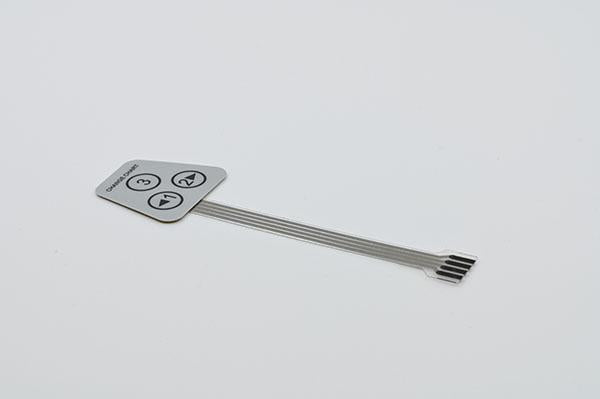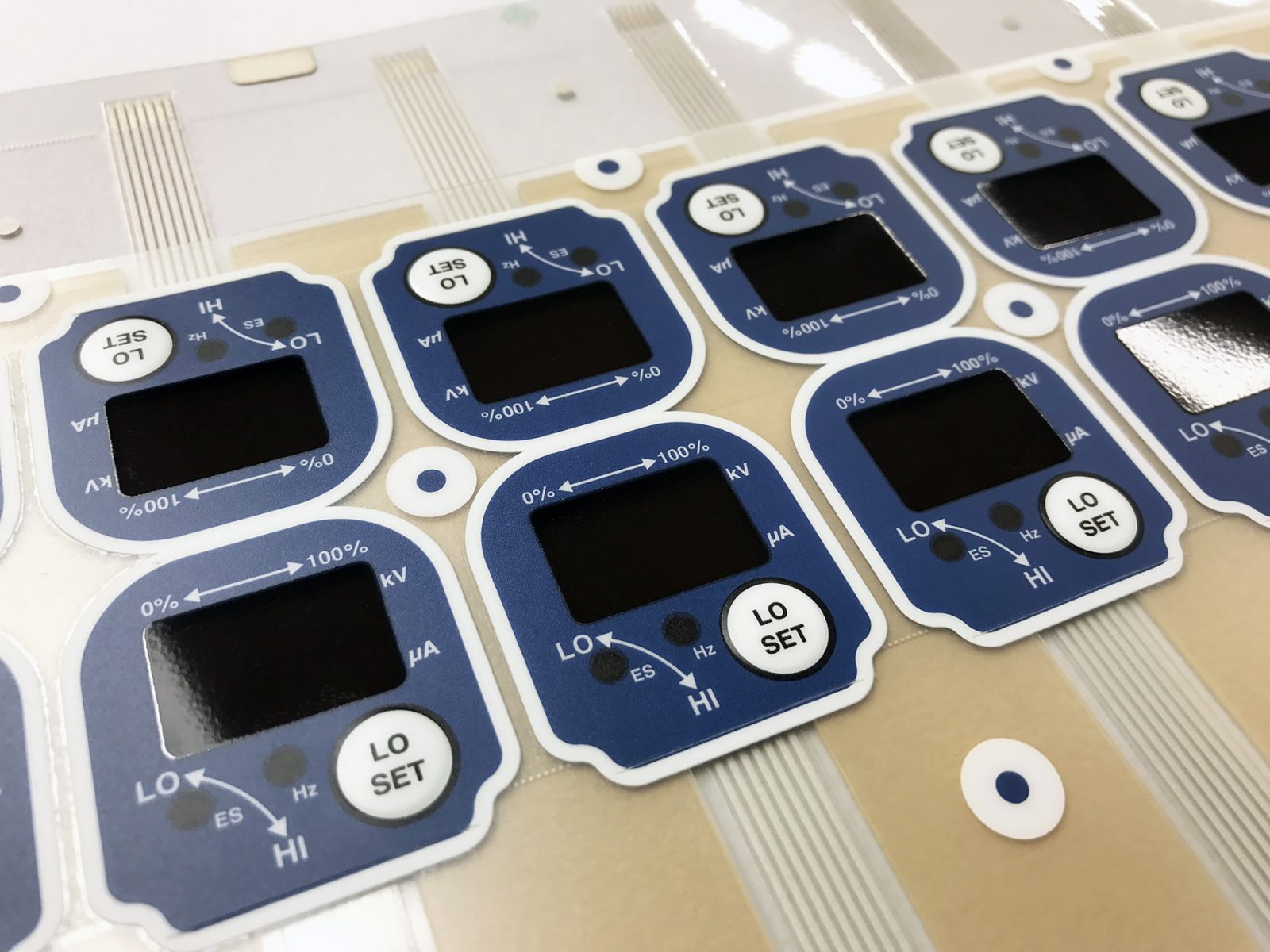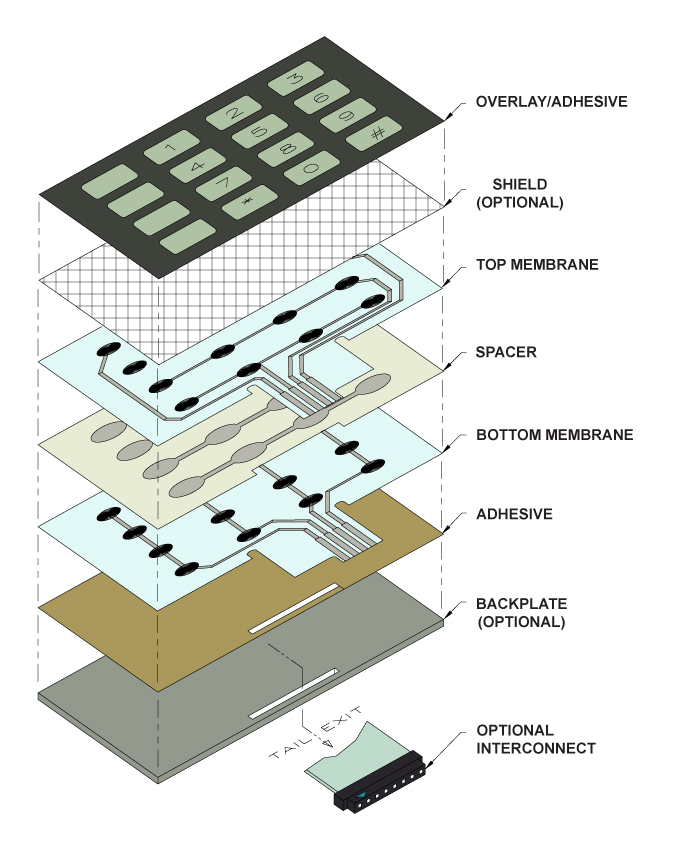Membrane Layer Switch Over Technology: The Trick to Reliable and Economical Interfaces
Membrane switch modern technology has arised as a pivotal component in the style of customer interfaces, supplying both reliability and cost-effectiveness across a diverse array of applications. As we discover the diverse advantages of membrane layer buttons, their potential for development raises concerns regarding future applications and developing patterns.
Recognizing Membrane Layer Switch Modern Technology
Membrane layer switch innovation is a commonly used interface service in various electronic gadgets, supplying a seamless blend of functionality and design. This modern technology includes multiple layers of materials, usually containing a visuals overlay, spacer layer, and a circuit layer. The visuals overlay shows the interface elements, while the spacer layer separates the circuit layer from the overlay until a user turns on a button.
When pressure is related to the overlay, the circuit layer finishes the electrical circuit, sending a signal to the gadget. This system allows for various setups, including tactile comments and backlighting alternatives, improving user communication. Membrane layer buttons are normally manufactured using durable products such as polyester or polycarbonate, guaranteeing longevity and resistance to ecological aspects like wetness and dust.
The convenience of membrane switches allows their application in diverse industries, consisting of clinical gadgets, consumer electronic devices, and industrial controls. Their portable design allows for assimilation into space-constrained environments, giving an effective user interface without endangering aesthetic allure. Comprehending the intricacies of membrane layer button technology is essential for makers and designers looking for to create reliable and reliable human-machine interfaces.
Trick Advantages of Membrane Switches
While different user interface services exist, membrane layer switches over offer distinctive benefits that make them a recommended choice in many applications. Among the primary benefits is their sturdiness; membrane layer switches are developed to hold up against extreme environmental conditions, including dampness, dust, and temperature level fluctuations, ensuring durable performance. This strength dramatically lowers the need for regular replacements, therefore reducing total maintenance costs.

Moreover, membrane switches are lightweight and portable, making them ideal for applications where space is restricted. Their inconspicuous layout adds to a sleek look without endangering performance.
Cost-effectiveness is likewise a noteworthy advantage, as the production procedure for membrane switches often tends to be less costly contrasted to conventional mechanical switches. This cost, integrated with their reliability and simplicity of setup, positions membrane switches over as a sensible solution for a vast variety of industries looking check this for efficient and reliable interface.
Applications Across Different Industries
How do membrane buttons adapt to the varied requirements of various sectors? Membrane switch modern technology is significantly acknowledged for its versatility, making it appropriate for a vast variety of applications throughout several sectors. In the clinical field, membrane layer switches are made use of in diagnostic equipment and individual monitoring devices, where their durability and simplicity of cleaning are critical for keeping health standards. The auto industry utilizes these buttons in dashboards and control panels, supplying a structured aesthetic while making sure user-friendly operation.
In consumer electronics, membrane buttons give a small remedy Continue for push-button controls and home devices, improving customer experience through intuitive style. Furthermore, the commercial field leverages membrane switches for equipment control board, taking advantage of their resistance to harsh environments, such as moisture and dust.
Army and aerospace applications likewise use membrane layer buttons for their reliability and ability to endure extreme conditions, guaranteeing operational effectiveness check out here in critical circumstances. Furthermore, the food and beverage industry adopts these switches for automated systems, where hygiene and ease of procedure are extremely important. Inevitably, membrane layer switches are tailored to meet the one-of-a-kind demands of each sector, confirming their necessary duty in modern-day innovation user interfaces
Design and Modification Alternatives

In the world of membrane layer button technology, style and customization options play a crucial function in improving performance and customer communication. These buttons can be tailored to fulfill certain operational requirements and visual preferences, making them functional parts in numerous applications.
Among the main modification choices is the layout of the switch itself, which can be made to fit unique interface and ergonomic considerations. By adjusting the form, size, and plan of buttons, suppliers can develop instinctive styles that assist in convenience of use. Additionally, the consolidation of various colors and visuals overlays permits branding and improved exposure, making certain that customers can swiftly recognize functions.
In addition, membrane buttons can be engineered with numerous tactile responses mechanisms, such as increased switches or audible clicks, to improve the customer experience. Different products can additionally be chosen for durability and ecological resistance, resolving aspects such as moisture, temperature level changes, and chemical direct exposure.
Ultimately, the substantial layout and customization choices readily available in membrane switch modern technology empower companies to produce tailored options that not just fulfill functional demands however likewise straighten with their branding and functional requirements.

Future Trends in Membrane Layer Buttons
As membrane layer switch technology continues to progress, future fads are significantly concentrated on enhancing user experience and integrating innovative performances. One considerable pattern is the combination of touch-sensitive and capacitive innovations right into standard membrane layer switches. This advancement enables more user-friendly customer interfaces, giving responsive responses while keeping a streamlined layout.
An additional arising pattern is making use of eco pleasant products, driven by the expanding demand for sustainable manufacturing techniques. Manufacturers are looking for to lower their carbon footprint by utilizing recyclable substratums and low-impact inks, aligning with worldwide sustainability objectives.
Additionally, the increase of the Internet of Points (IoT) is triggering the consolidation of clever attributes right into membrane buttons. Boosted connectivity choices will enable devices to connect with each other, permitting smooth combination into broader systems.
In addition, innovations in printing technologies, such as electronic printing, are enabling greater design adaptability and personalization. This enables producers to produce detailed styles and vibrant colors cost-effectively.

Verdict
In conclusion, membrane layer button modern technology represents a vital technology in interface style, offering significant benefits in resilience, modification, and cost-effectiveness. Its extensive applicability throughout diverse markets highlights its relevance in contemporary innovation. As developments proceed to emerge, especially in touch-sensitive user interfaces and sustainable products, the capacity for membrane layer changes to boost user experience and performance continues to be promising. Continued expedition of this modern technology will likely generate even more renovations and broaden its scope in future applications.
Comments on “The Major Benefits of Using Membrane Switches in Industrial Applications”